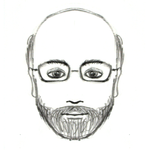- JMP will suspend normal business operations for our Winter Holiday beginning on Wednesday, Dec. 24, 2025, at 5:00 p.m. ET (2:00 p.m. ET for JMP Accounts Receivable).
Regular business hours will resume at 9:00 a.m. EST on Friday, Jan. 2, 2026. - We’re retiring the File Exchange at the end of this year. The JMP Marketplace is now your destination for add-ins and extensions.
- Subscribe to RSS Feed
- Mark Topic as New
- Mark Topic as Read
- Float this Topic for Current User
- Bookmark
- Subscribe
- Mute
- Printer Friendly Page
Discussions
Solve problems, and share tips and tricks with other JMP users.- JMP User Community
- :
- Discussions
- :
- How Do I Create Stacked 3D Plots
- Mark as New
- Bookmark
- Subscribe
- Mute
- Subscribe to RSS Feed
- Get Direct Link
- Report Inappropriate Content
How Do I Create Stacked 3D Plots
How can I stack 3D plots as in the graph below? There are 4 3D plots on the same graph (one z axis, same x and y axes). Each plot is a surface of the z-data plotted against x and y. Z may be a formula instead of raw data.
Haven't been able to find any posts specific to this. A script is okay. Hoping for an easy answer to share with a new JMP user.
Accepted Solutions
- Mark as New
- Bookmark
- Subscribe
- Mute
- Subscribe to RSS Feed
- Get Direct Link
- Report Inappropriate Content
Re: How Do I Create Stacked 3D Plots
You can get some of it by using formulas like this:

You may have to add a bit (like 1+ in the 2nd formula) to artificially separate the surfaces. If you right-click the color patches, you can get a menu to control some sheet properties.
Try opening surface plot with NO data tables open. The built-in formulas in slots 2,3,4 are for isosurface.
- Mark as New
- Bookmark
- Subscribe
- Mute
- Subscribe to RSS Feed
- Get Direct Link
- Report Inappropriate Content
Re: How Do I Create Stacked 3D Plots
You can get some of it by using formulas like this:

You may have to add a bit (like 1+ in the 2nd formula) to artificially separate the surfaces. If you right-click the color patches, you can get a menu to control some sheet properties.
Try opening surface plot with NO data tables open. The built-in formulas in slots 2,3,4 are for isosurface.
- Mark as New
- Bookmark
- Subscribe
- Mute
- Subscribe to RSS Feed
- Get Direct Link
- Report Inappropriate Content
Re: How Do I Create Stacked 3D Plots
Craige, thanks for the quick response. It turns out that we need to use the raw data and not formulas. Good to know this method for formulas as it's bound to come up at some time.
For the raw data, I used the 3D Scatterplot and the column labeling each "surface" as Coloring.
Recommended Articles
- © 2025 JMP Statistical Discovery LLC. All Rights Reserved.
- Terms of Use
- Privacy Statement
- Contact Us

